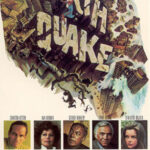“Bait 3D” is about to bring a new killer shark to movie theaters. This Australian horror film focuses on a group of tsunami survivors trapped in a submerged market with a deadly predator. The ensemble cast includes Xavier Samuel (“The Twilight Saga: Eclipse”) and Julian McMahon (“Fantastic Four”). Bait 3D” joins a long list of shark movies that have followed in the footsteps of the 1978 blockbuster “Jaws.” How have these films brought one of the world’s most-feared predators to the big screen?
Modern shark movies typically rely on a combination approach. Animatronic shark models are used when possible most often when an actor needs to interact with the shark in a scene that doesn’t end in the character being eaten. Computer-generated images (CGI) are used when sharks need to perform a function that sharks can’t actually do, such as the genetically engineered backward swimming sharks in “Deep Blue Sea.” Computer effects also expand the possibilities during vicious attack scenes. In “Deep Blue Sea,” a film set in a rapidly sinking underwater research facility, digital actors were also used for attack scenes to increase the violence. Use of CGI requires a skilled director and a sufficient budget to keep the sharks from looking obviously phony. Poorly rendered CGI can look like a child’s toy bobbing across the screen.
Animatronic sharks are used in controlled tank within a studio setting, usually in a large glass pool-like structure where actors can also swim inside. Using this type of setup allows for greater control of the robotics involved and prevents environmental issues such as weather changes from interfering with the sharks or the shots. Depending on the type of animatronic used, there can be over a hundred different computer- or manually operated controls dictating the shark’s movements. That level of precision requires no interference, or the shark may malfunction.
Filmmakers have learned from the disasters that occurred on the “Jaws” set. Director Steven Spielberg decided to place his three pneumatic sharks into the Atlantic Ocean, off of Martha’s Vineyard, to film the fake sharks in their natural environment. Exposure to the elements and salt water damage caused the sharks to malfunction. The shark bodies were made of foam that absorbed so much of the ocean water that the figures became distorted and swollen. Spielberg was forced to minimize the use of the robotic sharks and instead used suspenseful tactics similar to those of Alfred Hitchcock to hint at the presence of the shark. A prime example is the opening scene where a nude woman is attacked and killed with no visible hint of the shark. The actress was pulled across the water using wires to imply that the shark was beneath her.
Controlled use of animatronics can add realism even for the cast. Actors for “Shark Night 3D” reported feeling genuine fear when first confronted with that film’s animatronic sharks. The sharks were built to scale and included lesser known sharks such as the cookie cutter.
Footage of real sharks is often included in killer shark movies for a touch of authenticity. The real footage is most often used in long shots of the shark, in which there is no need to interact with any identifiable person or structure from the film. Early examples can be found in “Jaws” and its sequel, which used real footage of great whites filmed by Australian documentary filmmakers. The infamous shark attacked near the finale, and the set included a small stuntman in the cage and a real great white attacking the bars.
A rare case of a film that used entirely real sharks is “Open Water.” The 2003 film was based on a real-life incident where a couple on a scuba diving group trip was left behind in shark-infested waters. Stars Blanchard Ryan and Daniel Travis swam in the Atlantic Ocean with Caribbean Reef sharks. The actors wore chain mesh under diving suits for protection. A professional shark wrangler was on hand, and the sharks were fed a steady diet of tuna to keep their attention away from the humans. No one was bitten by a shark during the production of the film, though Ryan was nipped by a barracuda.
What about the newest entry to the genre, “Bait 3D”? Director Kimble Rendall wisely opted for the classic combination approach, merging CGI and animatronics. From the early teasers for the film, the CGI effects appear to be of a high quality on par with “Shark Night 3D.” Audiences should be on their seat’s edge when witnessing the shark stalks its prey in “Bait 3D.”



